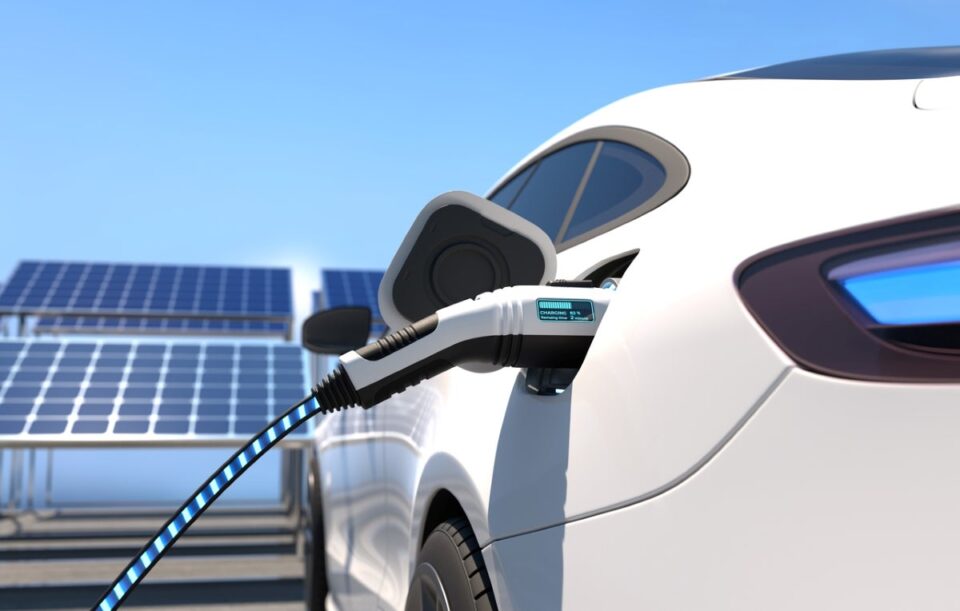
By Lolita Rusnac (ith24.it)
The paper provides an overview of the Circular Economy (CE) in the field of electric cars. An analysis of the state of the art in CE implementation at a European level is also included in the paper.
The Scope of current CE implementation considers electric cars as an important application of the transition towards zero CO2 emissions of European policy.
It is also clear that this transition is a great opportunity for Italy to a new industrial chain, with all the associated economic, employment and environmental benefits, strengthened, among other things, by a transversal experience in recycling because Italy’s engineering skills are recognized throughout the world.
• Keywords: Circular Economic, transition towards C02 emissions, fitfor55 electric cars, lithium battery, sustainability
• Design/methodology/Approach
This study is based on the knowledge of European policy about sustainability and circular economy, the description of the pro and cons of lithium batteries that still do not have a valid disposal and recovery process , and how it can be reconciled with the total zero emissions and climate neutrality for Europe by 2050.
The topic of circular economy (CE) is high on the political agenda and in particular in Europe, it is expected to promote economic growth by creating new businesses and job opportunities, saving materials’ cost, dampening price volatility, improving security of supply while at the same time reducing environmental pressures and impacts.
Social and environmental investments are as a marketing strategy (the so called green marketing).
The strategy will often be focusing on the future generations well-being in a way of meeting the future goals of sustainable consumption and production.
Companies integrate social and environmental concerns in their business : concept of optimizing profit instead of maximize it, in order to benefit social and environmental, instead of only the stakeholders.
Implementing and focusing on ethical behavior in order to increase the benefits for the work force, local communities, and society at large. There is a difference between recycling and circular economy and it stands in the fact that Recycle means decompose materials for reusing , but often with decreased quality and restricted number of times we can do this, until the product eventually will be burned and the remainings will be put in a landfill. Circular economy is all about keeping the loop closed, with materials in upcycling, keeping, and even increasing, the quality, to ensure we will be cutting the overall environmental costs as a whole.
As part of the Green Deal, the European Commission has recently launched a new package of measures known as Fit for 55 to achieve the goal of zero climate impact. The transition towards zero CO2 emissions will be structured in two phases:
• a first phase which envisages a 55% reduction in emissions by 2030 compared to 1990 levels
• a second phase which envisages total zero emissions and climate neutrality for Europe by 2050
Within the indications contained in the Fit for 55 package, the strong acceleration given to the abandonment of internal combustion engines has caused much discussion. The timeline set by the European Commission for the abandonment of these engines is 2035, the year after which only electric cars and vans will be sold in Europe. In conjunction with the abandonment of petrol and diesel cars, the European Commission plans to expand the charging infrastructure for electric cars.
The decision to switch to electric private transport is a well-considered choice which aims to drastically reduce carbon emissions which are the major cause of air pollution.
The decision to promote electric vehicles considered less polluting than internal combustion engines fits into this perspective. However, this is not a problem-free choice and electric motors also present risks for the environment which must be carefully evaluated. Although electric cars are not responsible for carbon monoxide emissions during their use, their Carbon Footprint is still high. In fact, it is necessary to consider the sum of the emissions produced by the manufacturing and for the entire life cycle of the vehicles, including their disposal. A series of data make it clear that the transition to electric is not so simple and that various pollution problems persist. The first surprising finding is the fact that around half of an electric car’s emissions over its lifetime come from engine manufacturing. The construction of an electric motor and the batteries to power it weigh much more on the environment than an internal combustion engine. Therefore, electric cars can have a major environmental impact, depending on how they are made. A factory that makes extensive use of renewable energy for the construction of electric motors will reduce the majority of the CO emissions of their life cycle at the base.

Another element to consider when talking about electric cars is their power supply. If it is true that they do not directly emit carbon monoxide into the atmosphere, it is equally true that electric cars must be powered. Their emissions, therefore, will depend on the composition of the energy sources of the circuit to which they are connected for recharging. A power grid that relies primarily on fossil fuels will negate the benefits of going electric by shifting the source of pollution from the car to energy production.
Electric cars, then, have the problem of batteries. Problem not to be underestimated. The lead-acid batteries of internal combustion engine cars, although toxic, are now subject to an efficient recycling process. The same cannot be said for the new lithium batteries of electric cars. In fact, lithium batteries still do not have a valid disposal and recovery process. Although there are many realities that have been studying the problem in recent years, an adequate solution has not yet been reached.
A lithium battery has an average life of about 20 years, but over time it reduces its storage capacity. It follows that batteries operating at 80% of their potential are no longer suitable for driving a car and are replaced. Exploiting these discarded batteries for other purposes extends their life cycle by optimizing the emissions for their production. A pioneering project in this sense is that of the Enel Group which in Melilla, Spain, in collaboration with Nissan, has converted 90 used batteries to store energy inside the local plant. It is an interesting project which, with a view to circularity and sustainability, aims to reduce the environmental impact of batteries. But sooner or later the batteries reach their end of life and it is necessary to develop valid disposal and recycling processes. Currently recycling is not economically viable since the extraction of raw materials is less expensive.
The situation, however, seems about to change: the EU has recently proposed changes to the law that regulates the marketing of batteries on its territory. The new standard provides for the obligation to collect at least 70% of the batteries and the recovery of 95% of the Cobalt, Copper, Lead and Nickel contained in them, the recovery of 70% of the Lithium and mandatory minimum levels of recycled materials at the interior of newly released batteries from 2030. The increasing use of recycled materials in batteries also aims to contain excessive environmental and human exploitation for their extraction. The procurement of the materials necessary for the production of lithium batteries, in fact, takes place with great environmental costs. A secondary consequence of the transition to electricity is certainly the increase in energy demand. A request that could, at least in the first phase of the transition, be satisfied with an increase in energy produced from fossil fuels. Power plants from renewable sources are generally exploited to their full potential, with no room for improvement. A sudden increase in energy demand, therefore, could only be satisfied by increasing the share of energy produced from non-renewable sources. If the transition to electric transport were not accompanied by serious political choices on energy sources, we could see a paradoxical increase in CO emissions. In Europe, however, If we add to this that electric motors are on average more efficient than internal combustion engines, the problem linked to the increase in energy requirements appears to be reduced.
And it is in this groove that Italy can and must play a leading role in giving life to a new industrial chain, with all the associated economic, employment and environmental benefits, strengthened, among other things, by a transversal experience in recycling. Considering only the batteries of electric cars that will already be found on the national territory, and without counting all related industries in the sector, the revenues of this activity will amount to between 400 and 600 million euros in the Peninsula, with a dizzying prospect of an increase in natural growth of the electric fleet in circulation, until it stabilizes at exponentially high values when all the fleet will be battery-powered. Turnover that can further expand also by importing accumulators to be recycled from abroad.
From what has been seen so far, it is clear that the transition to electric transport is not without trade-offs. This is a delicate turning point that needs to be tackled carefully by the institutions.
There is significant room for improvement and the characteristics of electric motors make them the best candidates today to replace combustion engines. A growing number of experts agree that their environmental impact can be very limited, provided they are made and charged with energy from renewable sources.